Cricket Balls: In the world of cricket, the cricket ball plays an essential role in determining the outcome of a game. From the way it swings in the air to the pace at which it is delivered, the type of ball used can significantly influence the strategies of both the bowlers and the batsmen. Different formats of the game require different types of cricket balls, each with its distinct features. In this article, we will explore the various types of cricket balls used in different formats of the game, such as Test cricket, One Day Internationals (ODIs), and Twenty20 (T20) cricket.
The Anatomy of a Cricket Ball
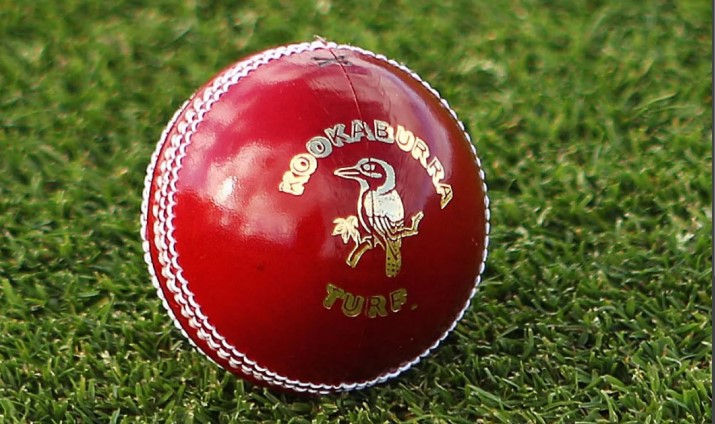
Cricket Balls: A standard cricket ball consists of several components that contribute to its performance:
Core: The core of the ball is made of cork, rubber, or a combination of both. It provides the necessary bounce and weight.
Leather Cover: The outer cover is made of leather, typically dyed red, white, or pink, depending on the format.
Stitching: The ball features raised stitching around the seam, which helps bowlers get more grip and allows them to generate movement in the air or off the pitch.
Seam: The seam is crucial for swing bowling. Bowlers exploit it by orienting the seam to create movement in the air.
Types of Cricket Balls for Different Formats
Test Cricket Ball (Red Ball)
Cricket Balls: The red cricket ball is traditionally used in Test cricket, which is played over five days. The ball’s color helps players, particularly the batsmen, see it better during the day, and it maintains its shape for a longer period due to its hard leather exterior.
Color: Red
Weight: 156-163 grams
Circumference: 22.4 to 22.9 cm
Swing and Wear: The red ball is known for its ability to swing and seam for a more extended period, typically in the first two days of a Test match. As the match progresses, the ball loses its shine, and the rough surface on one side of the ball can lead to reverse swing.
Durability: Due to its thicker leather and harder construction, the red ball is designed to last for long periods (typically five days in Test cricket).
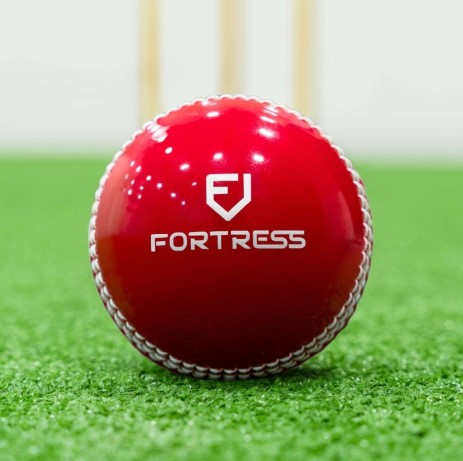
| Feature | Red Ball (Test Cricket) |
|---|---|
| Color | Red |
| Weight | 156-163 grams |
| Circumference | 22.4 – 22.9 cm |
| Swing and Durability | Swing for the first few days; reverse swing later; lasts up to 5 days |
One Day International (ODI) Ball (White Ball)
Cricket Balls: In One Day Internationals (ODIs), the white cricket ball is used. The white ball is more visible under artificial lighting, especially in day-night matches. It’s designed to be more durable and easier to spot in the air during limited-overs formats.
Color: White
Weight: 155-160 grams
Circumference: 22.4 to 22.9 cm
Swing and Wear: The white ball tends to swing early in the innings, but unlike the red ball, it does not swing as much later in the game. White balls also tend to become dirty quickly, which can affect visibility and swing. The ball’s life is shorter than the red ball, typically lasting 40-50 overs.
Durability: It lasts for one innings (50 overs) but can get scuffed up easily, affecting its movement.
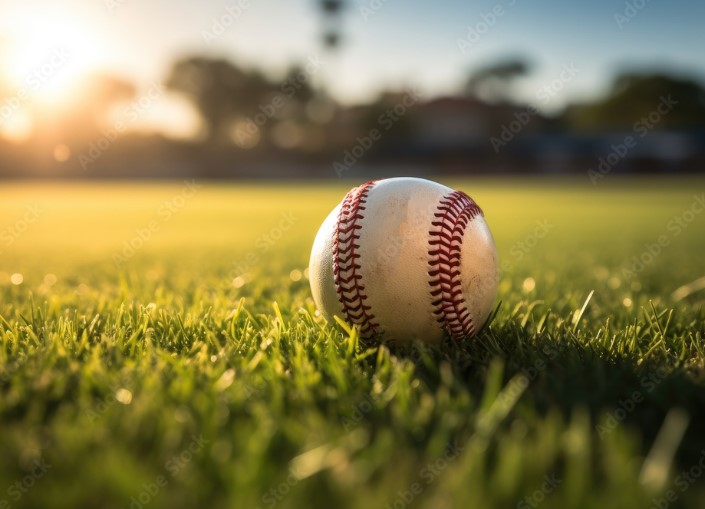
| Feature | White Ball (ODI Cricket) |
|---|---|
| Color | White |
| Weight | 155-160 grams |
| Circumference | 22.4 – 22.9 cm |
| Swing and Durability | Swing early in the innings; lasts up to 50 overs |
Twenty20 (T20) Ball (White or Pink Ball)
Cricket Balls: In T20 cricket, both white and pink balls are used, but the white ball is more common in domestic leagues and some international matches. The pink ball, however, is increasingly becoming popular, especially for T20s played under lights.
Color: White or Pink
Weight: 155-160 grams
Circumference: 22.4 to 22.9 cm
Swing and Wear: The white ball in T20 cricket swings for the first few overs, but its movement diminishes as the game progresses. T20 matches tend to be fast-paced, so the ball doesn’t last as long, and its life is limited to around 20 overs per innings.
Durability: The ball wears down quickly in T20 cricket because of the aggressive hitting and limited overs.
| Feature | White or Pink Ball (T20 Cricket) |
|---|---|
| Color | White or Pink |
| Weight | 155-160 grams |
| Circumference | 22.4 – 22.9 cm |
| Swing and Durability | Swing early; lasts up to 20 overs per innings |
Pink Cricket Ball (Test and T20 Cricket)
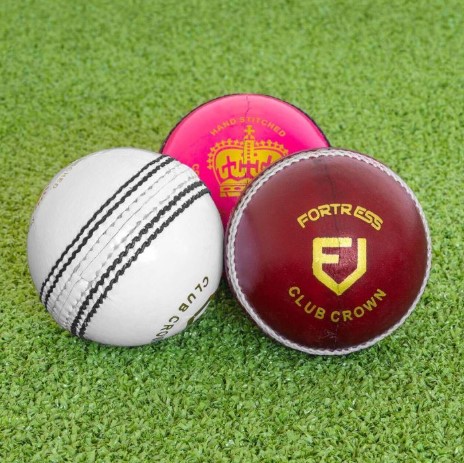
Cricket Balls: The pink cricket ball has been introduced for day-night Test matches and T20s, offering a better visibility option when the game is played under lights. It is designed to provide a balance between the durability of the red ball and the visibility of the white ball.
Color: Pink
Weight: 156-163 grams
Circumference: 22.4 to 22.9 cm
Swing and Wear: The pink ball behaves similarly to the red ball in the first few hours, providing swing. It is engineered to maintain its shine longer than the white ball, making it more suitable for day-night Test matches. However, it does not offer as much swing as the red ball later in the game.
Durability: The pink ball lasts a full day-night Test match but can show wear after prolonged use, especially under lights.
| Feature | Pink Ball (Test and T20 Cricket) |
|---|---|
| Color | Pink |
| Weight | 156-163 grams |
| Circumference | 22.4 – 22.9 cm |
| Swing and Durability | Swing initially; lasts up to a full day-night Test match |
Choosing the Right Ball for the Format
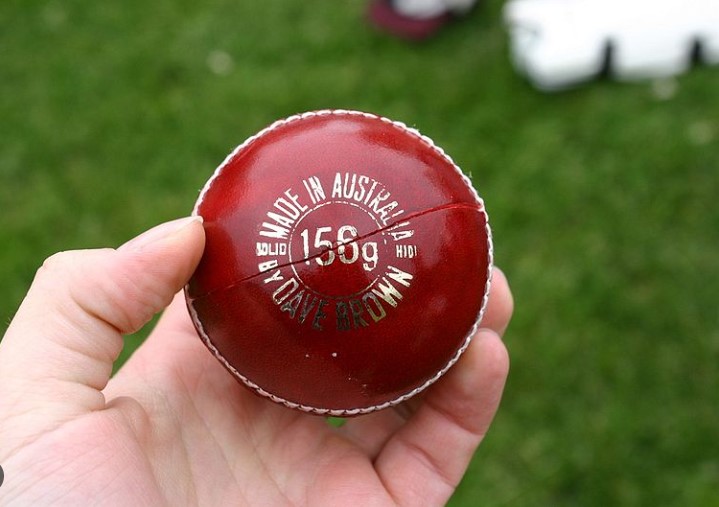
Cricket Balls: Each cricket ball is designed to optimize the playing conditions and the format of the game. Below is a comparison of the key features of the different types of cricket balls used in various formats.
| Feature | Red Ball (Test) | White Ball (ODI) | White/Pink Ball (T20) | Pink Ball (Test and T20) |
|---|---|---|---|---|
| Color | Red | White | White/Pink | Pink |
| Weight | 156-163 grams | 155-160 grams | 155-160 grams | 156-163 grams |
| Circumference | 22.4 – 22.9 cm | 22.4 – 22.9 cm | 22.4 – 22.9 cm | 22.4 – 22.9 cm |
| Swing Ability | Excellent in initial overs | Moderate early swing | Early swing, reduced later | Good swing, but less than red |
| Durability | Up to 5 days | Up to 50 overs | Up to 20 overs | Lasts a full day-night Test |
| Visibility | Good during daylight | Excellent under lights | Excellent under lights | Excellent under lights |
Cricket Balls: In cricket, the ball is an essential part of the game, influencing how players strategize and execute their skills. Whether it’s the red ball used in Test cricket for its swing and longevity, the white ball used in ODIs for its visibility under lights, or the pink ball making its way into both Test and T20 formats for day-night matches, each type of cricket ball is suited to the demands of the format it’s used in.
Cricket Balls: Bowlers, especially, need to understand the properties of each type of ball and adapt their strategies accordingly, whether it’s relying on swing early on or managing wear and tear throughout the game. Understanding these differences can make a significant impact on both individual and team performances in cricket.
